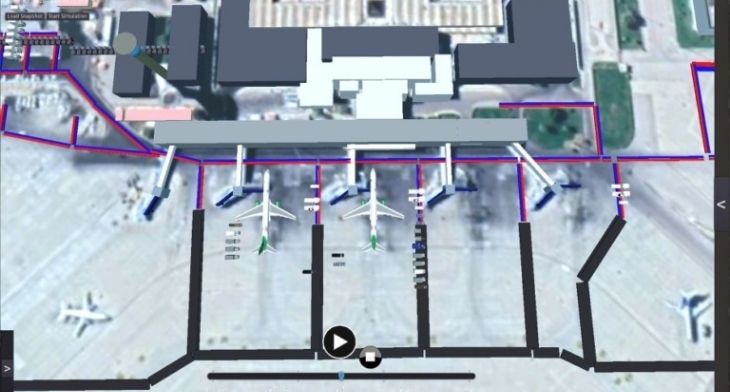


To explore the viability of introducing autonomous solutions to airside operations at Gerald R Ford International Airport, Aurrigo is creating a digital twin of the US airport.
The UK-based developer of autonomous vehicles plans to use its Auto-Sim software to create an airside digital twin of operations at Gerald R Ford International Airport in Michigan. It will replicate the airport’s busiest periods, which could include 112 aircraft movements, requiring upwards of 1,000 individual activities to be serviced.
Creating a virtual airport twin will help Aurrigo identify cost savings, enhance customer experience and achieve a host of environmental improvements, as well as lay the foundations for how the airport could implement autonomous operations in the future.
The initiative is part of the Ford Launchpad for Innovative Technologies and Entrepreneurship (FLITE), which provides pilot-testing opportunities to companies bringing emerging air travel solutions to market.
A PlanetM Testing Grant from the Michigan Economic Development Corporation will enable Aurrigo to build a model of airside operations, covering roadways, intersections, stands and all operational vehicle types and movements.
David Keene, CEO of Aurrigo, said: “The world’s airports are all facing the same challenge of providing greater levels of customer service with the most cost-effective use of resources and minimal environmental impact. It’s a careful balancing act and one brought into even sharper focus with the impact of the COVID-19 pandemic.
“Auto-Sim will enable Ford International Airport to be the first in the US to complete a real-world feasibility study of a current airport using digital twin technology.”
A team of simulation engineers and project managers based at Aurrigo’s engineering centre in the UK will work with Ford International Airport planning staff to integrate vehicle fleet capacity and flight schedules so they can simulate airside servicing to benchmark current operations and predict future scenarios.
In addition to modelling operations, the Auto-Sim can simulate effects of staff shortages as a result of flight delays, de-icing schedules for departing aircraft and extreme weather conditions.
Keene added that the digital model will allow airport planners to “model the operational processes, financial implications, customer journey experience and environmental impact of implementing new technology without the risk of expensive mistakes.”





